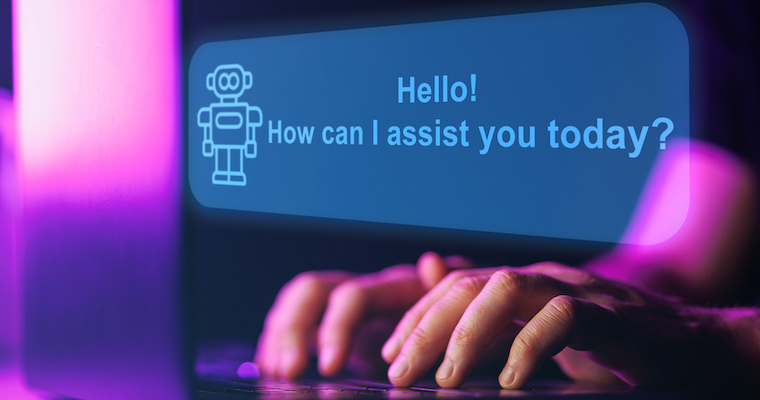Generative AI Can Help Grow Your Business

Generative AI technologies like Chat GPT can change knowledge work and improve business functioning, allowing us to grow the business, innovate and create wealth. FamilyBusiness.org Senior Editor and EIX contributor Mat Hughes spoke with leading AI researcher and innovation expert Paavo Ritala about the reasons to be excited about generative AI right now; how AI is generating real value for businesses; ways to use generative AI like ChatGPT effectively in business; and the steps owners, managers, and entrepreneurs can take to create value for their business using AI.
Paavo Ritala is Professor of Strategy and Innovation at the Business School at LUT University, Finland. He researches innovation ecosystems and platforms; the role of data and digital technologies in organizations; and the circular and regenerative economy. Recently he has worked with businesses to understand how new generative AI technologies can be used to improve knowledge work, innovation, and firm performance. Ritala is also Co-Editor-in-Chief of the renowned innovation journal R&D Management.
A video and podcast of the discussion are below. Here are some of the highlights.
The Evolution of AI
AI was intended to be a system mimicking human intelligence, but AI is a bundle of different technologies—and AI has changed dramatically since its beginnings.
The first proper wave of AI were rule-based systems and so-called expert systems. These are top-down. Humans encoded their own wisdom and really tried to have systems that mimic human intelligence. This included encoding medical decisions and financial accounting wisdom into a computer system. This kind of expert system is called a GOFAI: “good old-fashioned AI.” The pinnacle of that was IBM’s Deep Blue. Although Deep Blue beat world chess champion Gary Kasparov, it was still a rule-based AI taught all of the moves of the chess masters and grandmasters.
Now we are in the second wave: machine learning. This is totally different because it is bottom-up. Neural networks with multiple layers learn from data. They adapt their behavior and try to accomplish some outcomes asked of it. But we don’t exactly know how this process works. Now, AI tries to accomplish something. We give it as a goal; we give it an objective; and then it learns by itself. In other words, the AI goes on its own way and comes up with something that humans might not accomplish themselves. It still resembles what humans do because it’s taught with human data, especially the newest large language models. But it is not necessarily hard-coded with human intuition. What we do with it is limited only by our imagination.
For Spotify, Netflix, Amazon, Google search, or anything where data moves and is stored, AI predicts what would be valuable as content or as the next item a consumer would want to purchase. In production lines, AI identifies defective materials or products that have errors. For industrial machinery, we now have predictive maintenance (so do many of our automobiles). Project recommendations, predicting trends, thinking about new markets, creating content, speeding up mundane administrative tasks, and email responses are all ways AI helps create convenience for people.
Generative AI: An Easy-to-Use ‘Co-Pilot’
But what about generative AI? Generative AI introduces creativity, sometimes creating outcomes indistinguishable from a human’s. Free-to-access generative AI or subscriptions can now create images, sounds, voices, marketing content and blurbs, and visual designs. It can do predictions from sentiment analysis for news or information, and even software development.
Think of generative AI as a co-pilot, a new, and very malleable employee. The key to advancements like ChatGPT is that they are plug-and-play platforms ready to use. You don’t need any coding skills at all. You just need to learn how to give the AI clear commands or instructions around what you want -- in other words, how to prompt the AI most effectively to get the best outcomes for your business needs. Things you might have previously outsourced might now stay in-house with this new “co-pilot.” For smaller-sized businesses, this is a great way to overcome staffing limitations.
Repetitive and routine work human work is open to automation. Automating those tasks to AI allows humans to learn and concentrate on those tasks that require human situational awareness, which AI does not have. For creative work -- or any work or tasks that call for emotional intelligence, empathy, or trust – AI can create the space for human ingenuity. But the most exciting opportunities lie in how generative AI like ChatGPT can create opportunities for human-augmented work—making our work better, with AI as a coworker.
As Ritala puts it, “The technology is not so much a barrier to entry anymore.”
Takeaways For Business Owners
Here are some steps owners, managers, and entrepreneurs can take to create value for their business using AI.
- Learn about and experiment with those AI tools that are available and easily accessible.
- Introduce AI consciously and deliberately. Companies should provide (or source) support and training so that people can see how to use AI in their work.
- Develop clear guidelines and policies on what AI can and should not be used for.
- Map out team structures and coordination of workflow. If we are to use these new AI tools professionally, we need to think about how the workflows are coordinated and what goes into our processes.
- Consider your organizational culture and mindset. Some businesses are very bold and experimental, and some are much more conservative. For both types of businesses, it is good to develop clear protocols, rules, and guidelines on using AI (to encourage innovating with its use but in ways that mitigate risk).
- Innovate your business model. What if you can change how you monetize your service, engage your customers, or engage with professionals? To make AI work for you, can you change the workflows? Do you plan for AI just to be a productivity tool, which is nice to have, or can you really innovate your business model?
Watch the Video
Listen to the Podcast
LEARN MORE
Ritala, P., Ruokonen, M. and Ramaul, L. (2023), “Transforming boundaries: how does ChatGPT change knowledge work?”, Journal of Business Strategy. https://doi.org/10.1108/JBS-05-2023-0094

Schulze Distinguished Professor and Professor of Innovation and Entrepreneurship / School of Business / University of Leicester
View Profile

Professor of Strategy & Innovation / LUT School of Business / LUT University
View Profile



